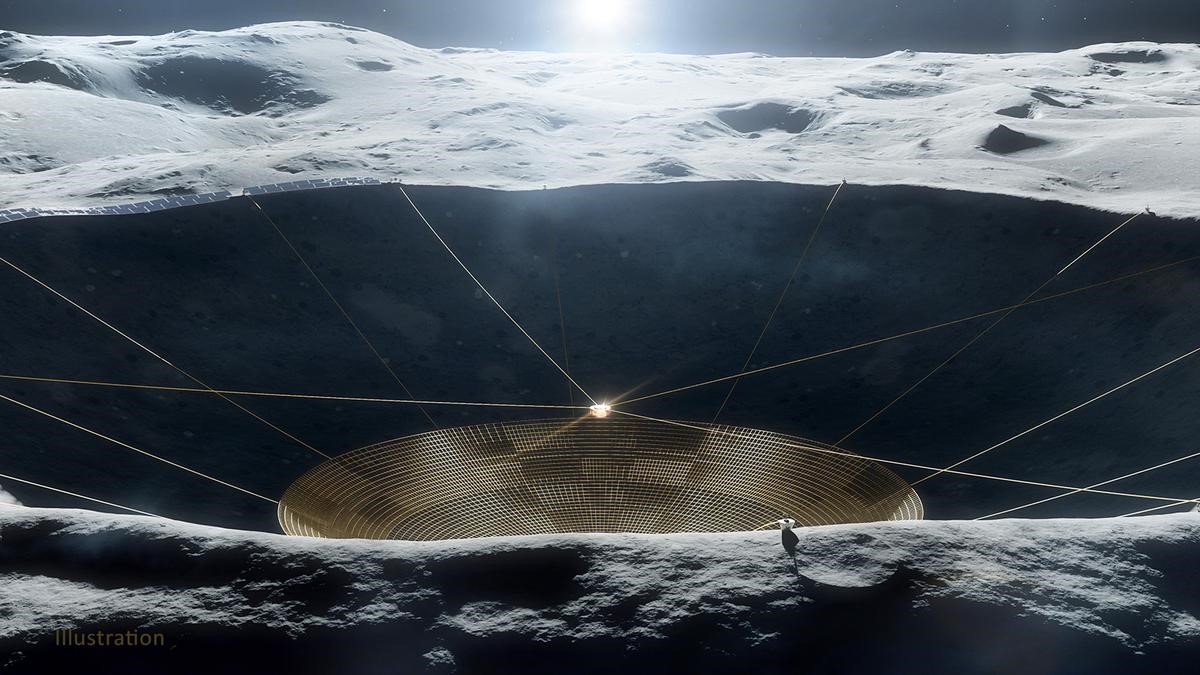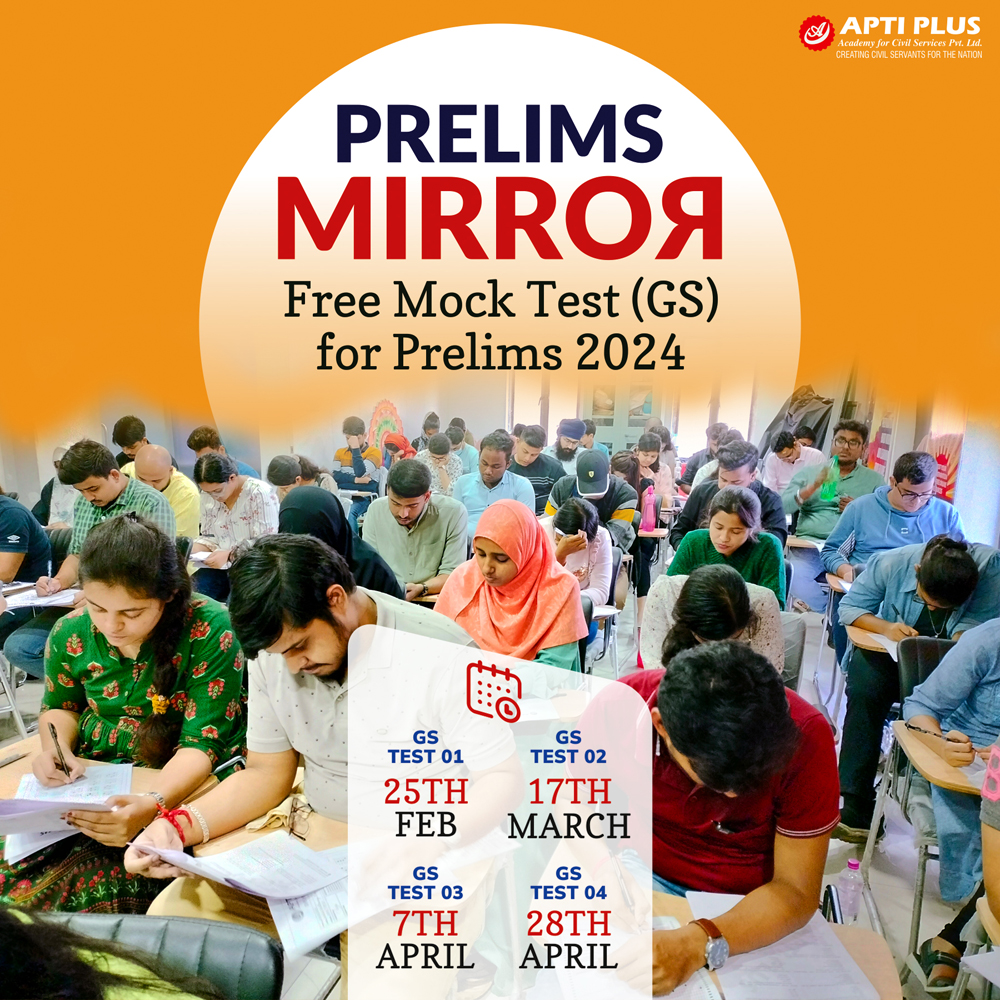Description

Source: The Hindu
Disclaimer: Copyright infringement not intended.
Context
- Astronomers are considering placing optical and radio telescopes on and around the moon to overcome limitations faced by terrestrial and Earth-orbiting telescopes.
- The moon's far side offers pristine, airless conditions, shielded from Earth's radio interference and electromagnetic noise.
Details
Challenges and Solutions
- Deployment Challenges: Deploying telescopes on the moon poses logistical challenges due to the harsh lunar environment and high costs.
- Alternative Approaches: Orbiting telescopes around the moon offer an alternative approach, allowing for observations without the need for lunar landings.
Technological Advancements
- Instrumentation: Lunar telescopes will utilize advanced instrumentation, including wideband frequency-independent antennas, self-calibrating receivers, and digital correlators.
- International Collaboration: Space agencies like NASA, ESA, and China's CNSA are actively developing lunar telescope projects, leveraging technological advancements for space exploration.
Scientific Objectives
- Studying the Dark Ages: Lunar telescopes aim to observe signals from the Dark Ages of the universe, providing insights into the evolution of the cosmos from its early stages.
- Cosmic Microwave Background (CMB): By capturing the oldest light in the universe, lunar telescopes can study the cosmic microwave background and its implications for cosmology.
Global Initiatives and Future Prospects
- LuSEE Night Project:
- Led by Aritogi Suzuki, the LuSEE Night project, a collaboration between NASA and Berkeley Lab, aims to land instruments on the moon's far side.
- The project targets a landing near the moon's equator, opposite Earth, to minimize radio frequency noise from our planet.
- Future Moon-Bound Instruments:
- Numerous instruments are in planning stages with space agencies like NASA and ESA for deployment on the moon.
- NASA's Long-Baseline Optical Imaging Interferometer will study magnetic activity in stars and galaxies using visible and ultraviolet wavelengths.
- ESA plans to launch a radio telescope aboard its lunar lander, 'Argonaut', by 2030, along with other projects focusing on gravitational wave detection and infrared observations.
- China's Moon-Orbiting Radio Telescope:
- China is set to launch a moon-orbiting radio telescope in 2026, positioning itself at the forefront of lunar exploration and astronomical research.
- The Queqiao-2 satellite, deployed in lunar orbit, carries a 4.2-meter antenna for radio astronomy, demonstrating China's commitment to space science.
- PRATUSH Mission: India's PRATUSH project represents a significant contribution to lunar astronomy, offering unique opportunities for scientific exploration.

About PRATUSH: Probing ReionizATion of the Universe using Signal from Hydrogen
- PRATUSH is a pioneering space telescope designed to reveal the Cosmic Dawn of the universe by studying the radiation from neutral hydrogen gas.
Objective:
- PRATUSH aims to answer fundamental questions about the early universe, including:
- When did the first stars form?
- What were the nature and characteristics of the first stars?
- What was the color of the light emitted by the first stars during the Cosmic Dawn?
Importance of Cosmic Dawn and Epoch of Reionization (EoR):
- The Cosmic Dawn marks the period when the first sources of radiation, such as stars and galaxies, formed in the universe.
- EoR refers to the epoch when these sources of radiation reionized most of the neutral hydrogen atoms in the universe, transitioning it from a neutral to an ionized state.
21-cm Signal from Neutral Hydrogen:
- PRATUSH utilizes the natural emission signal of neutral hydrogen atoms at a wavelength of 21-cm (or 1420 MHz) to study distant galaxies and the evolution of the universe.
- By tracing the strength and shape of this 21-cm signal as a function of cosmic time, PRATUSH aims to understand the process of reionization and the characteristics of the early universe.
Unique Capabilities:
- Wideband Frequency-Independent Antenna: Operates over the frequency band of 30-250 MHz, enabling comprehensive coverage of the radio spectrum.
- Self-Calibratable Analog Receiver: Ensures precise calibration of instrument response, essential for accurate signal detection.
- Digital Correlator with High Spectral Resolution: Records spectra of radio emission with a resolution of 100 kHz, enabling detailed analysis of the signal.
- Custom Design for Instrument Sensitivity: Aims for sensitivity at the level of few millikelvin without systematic limitations, achieved through meticulous calibration strategies.
Funding and Collaboration:
- PRATUSH is funded for pre-project studies by the Indian Space Research Organization (ISRO).
- The project involves collaboration between the Raman Research Institute (RRI) and ISRO.
About Telescopes
- Telescopes are devices designed to gather and focus light to form magnified images of distant objects.
- History: Developed over centuries, with early telescopes credited to inventors like Galileo Galilei and Johannes Kepler in the 17th century.
- Function: Telescopes work by using lenses or mirrors to collect and concentrate light, resulting in an enlarged and clearer view of celestial objects.
Types of Telescopes:
- Refracting Telescopes: Use lenses to bend and focus light. Consist of an objective lens and an eyepiece.
- Reflecting Telescopes: Use mirrors to reflect and focus light. Consist of a primary mirror, secondary mirror, and an eyepiece.
- Compound Telescopes: Combine both lenses and mirrors for focusing light. Examples include Schmidt-Cassegrain and Maksutov-Cassegrain telescopes.
- Radio Telescopes: Detect radio waves emitted by celestial objects. Comprise large dish antennas and receivers.
- Space Telescopes: Orbit Earth to observe celestial objects without atmospheric interference. Examples include the Hubble Space Telescope and the James Webb Space Telescope.
Components of a Telescope:
- Objective Lens/Mirror: Gathers light and forms an image at the focal point.
- Eyepiece: Magnifies the image formed by the objective lens/mirror for viewing.
- Mount: Supports the telescope and allows it to be pointed and tracked.
- Tube: Encases the optical components and protects them from environmental factors.
- Finder Scope: A smaller telescope attached to the main telescope to aid in locating objects.
- Focuser: Adjusts the position of the eyepiece to achieve sharp focus.

Key Features:
- Aperture: Diameter of the objective lens/mirror, determining the telescope's light-gathering ability and resolution.
- Focal Length: Distance between the objective lens/mirror and the focal point, affecting magnification.
- Magnification: Ratio of the focal length of the telescope to the focal length of the eyepiece.
- Field of View: The angular size of the area visible through the telescope.
- Mount Type: Equatorial mounts for tracking celestial objects as the Earth rotates, and altazimuth mounts for simpler up-down and left-right movements.
- Optical Coatings: Anti-reflective coatings on lenses and mirrors to enhance light transmission and reduce glare.
Must read articles:
Moons in the solar system
Sources:
The Hindu
Pratush
|
PRACTICE QUESTION
Q. With ambitious projects like PRATUSH and international collaborations underway, the future of lunar astronomy holds immense promise for unraveling the mysteries of the universe. Critically Analyse this statement. (250 Words)
|









